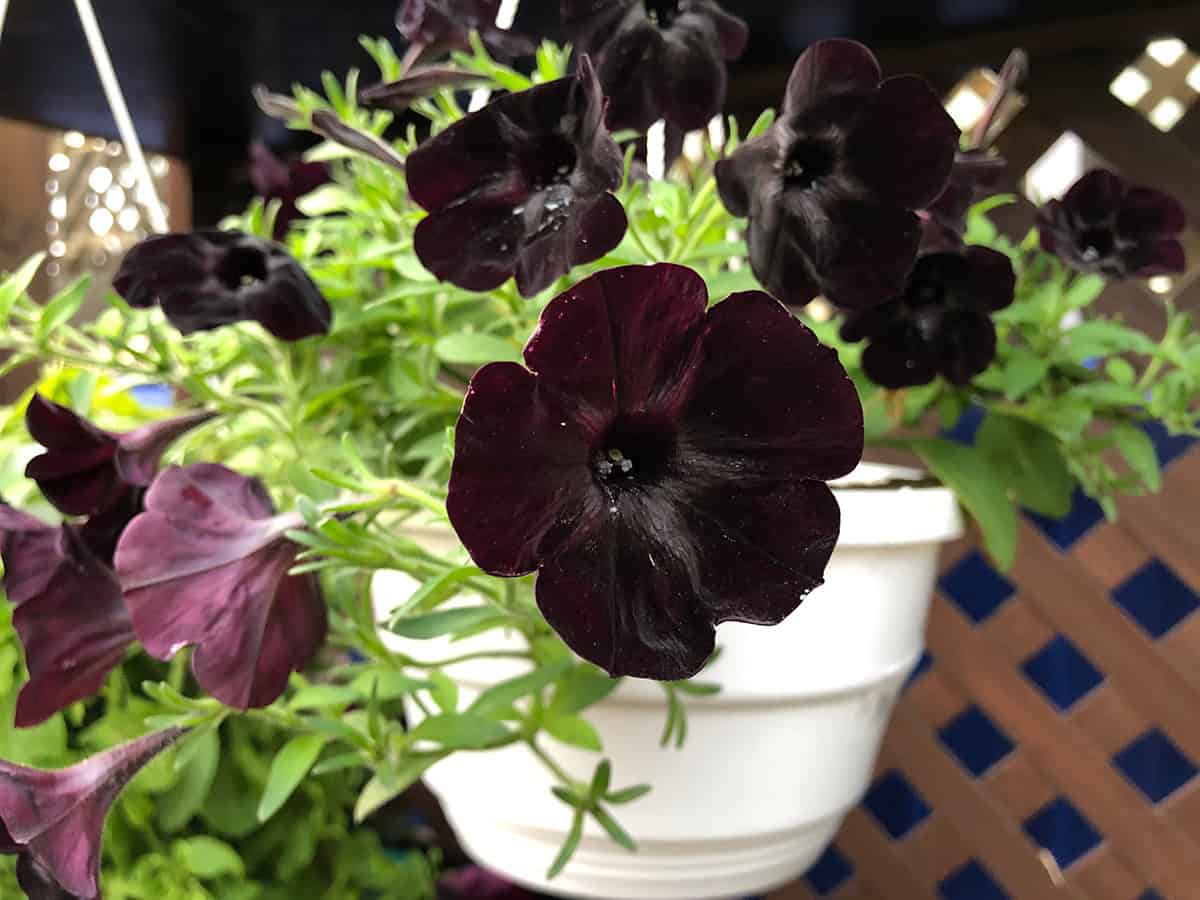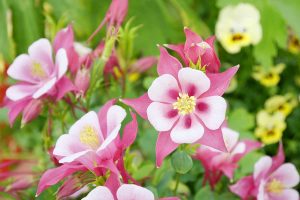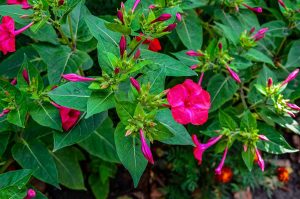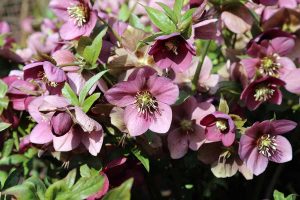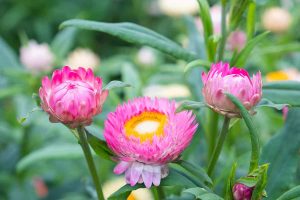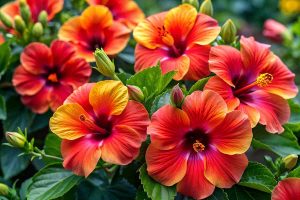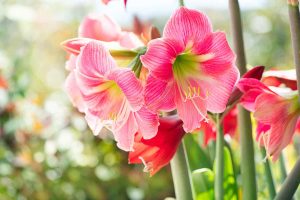You notice your garden looks the same as everyone else’s, filled with bright, common flowers. Adding black flowers can create a striking and unique contrast that sets your garden apart. Learn about different types of black flowers and how to incorporate them into your garden for a dramatic and elegant look.
Table of Contents
- Black Dahlia
- Queen Of Night Tulip
- Black Baccara Rose
- Black Calla Lily
- Black Velvet Petunia
- Chocolate Cosmos
- Black Hollyhock
- Bat Orchid
- Black Hellebore
- Black Pansy
- Black Magic Petunia
- Ebony Queen Iris
- Black Beauty Elderberry
- Black Dragon Rose
- Black Swan Poppy
- Black Star Calla Lily
- Black Pearl Asiatic Lily
- Black Prince Snapdragon
- Night Rider Lily
- Black Eyed Susan
- Black Scabiosa
- Black Zinnia
Black Dahlia
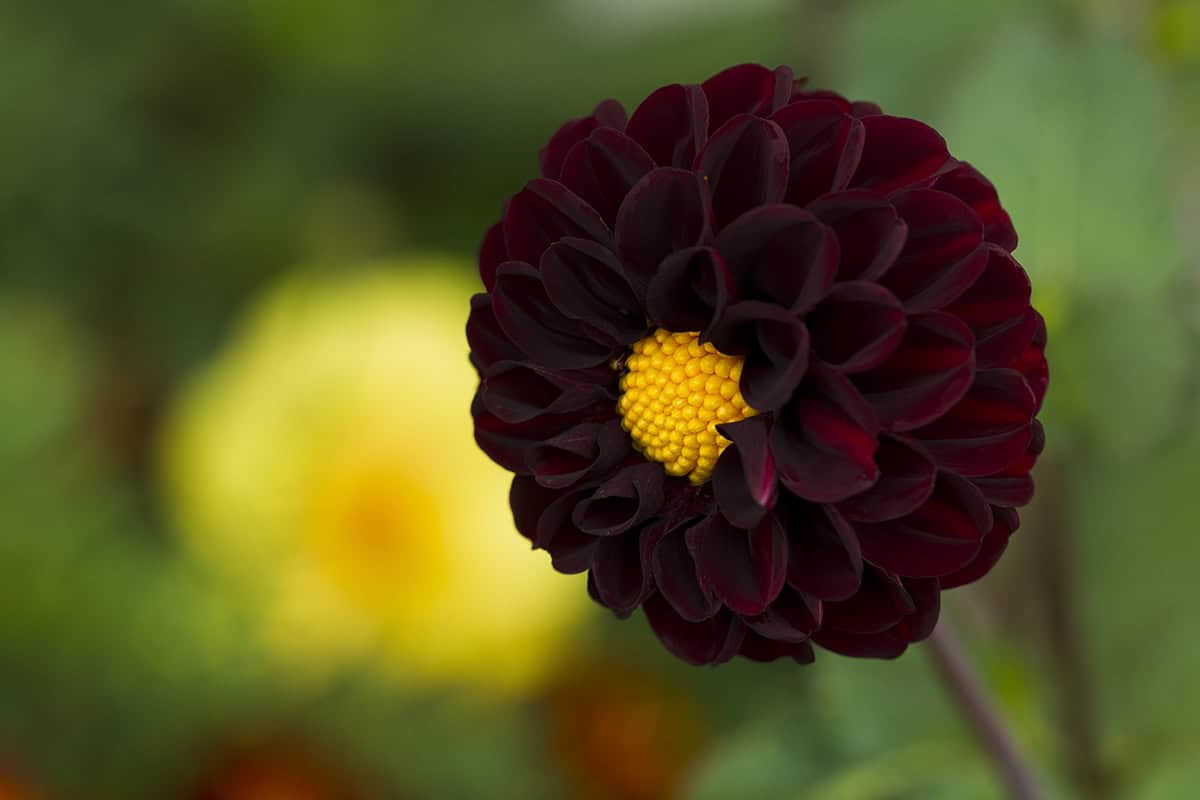
- USDA hardiness zones: 8-11
- Mature Size: Can reach up to 6 feet in height and 2-3 feet in width
Black Dahlias offer a striking appearance in your garden. They are noted for dark foliage and deep-colored blooms. Varieties like the Black Leafed Hybrids create a unique contrast, especially when they’re not flowering.
Your Black Dahlia plants can grow to impressive sizes. With the right care, they can be a stunning addition. They prefer well-draining soil and thrive in full sunlight. Protect them from pests to maintain their beauty.
Queen Of Night Tulip
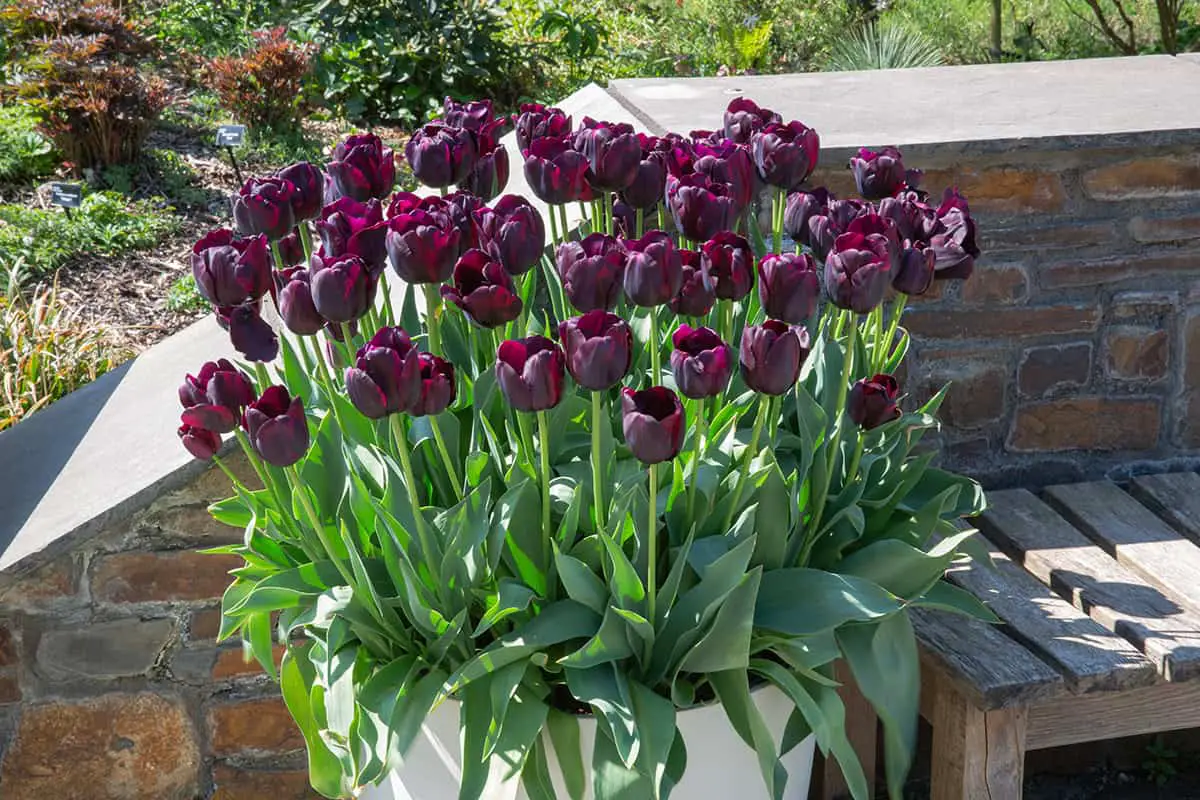
- USDA Hardiness Zones: 3 through 8
- Mature Size: Up to 24 inches in height
The Queen of Night Tulip offers you striking blossoms. Its appearance is almost black, a deep and alluring purple hue. In your spring garden, these tulips create a dramatic contrast. You’ll notice their color pairs well with lighter flowers.
In full sun to partial shade, Queen of Night thrives. Ensure the soil drains well for optimum growth. This tulip variety blooms in late spring, providing a bold end to the season’s floral display.
Care is simple for this hardy plant. Plant bulbs in the fall, about 4 to 6 inches deep. You’ll find this tulip is low maintenance yet makes a memorable impact. These dark flowers attract attention in borders, beds, or as cut flowers.
Black Baccara Rose
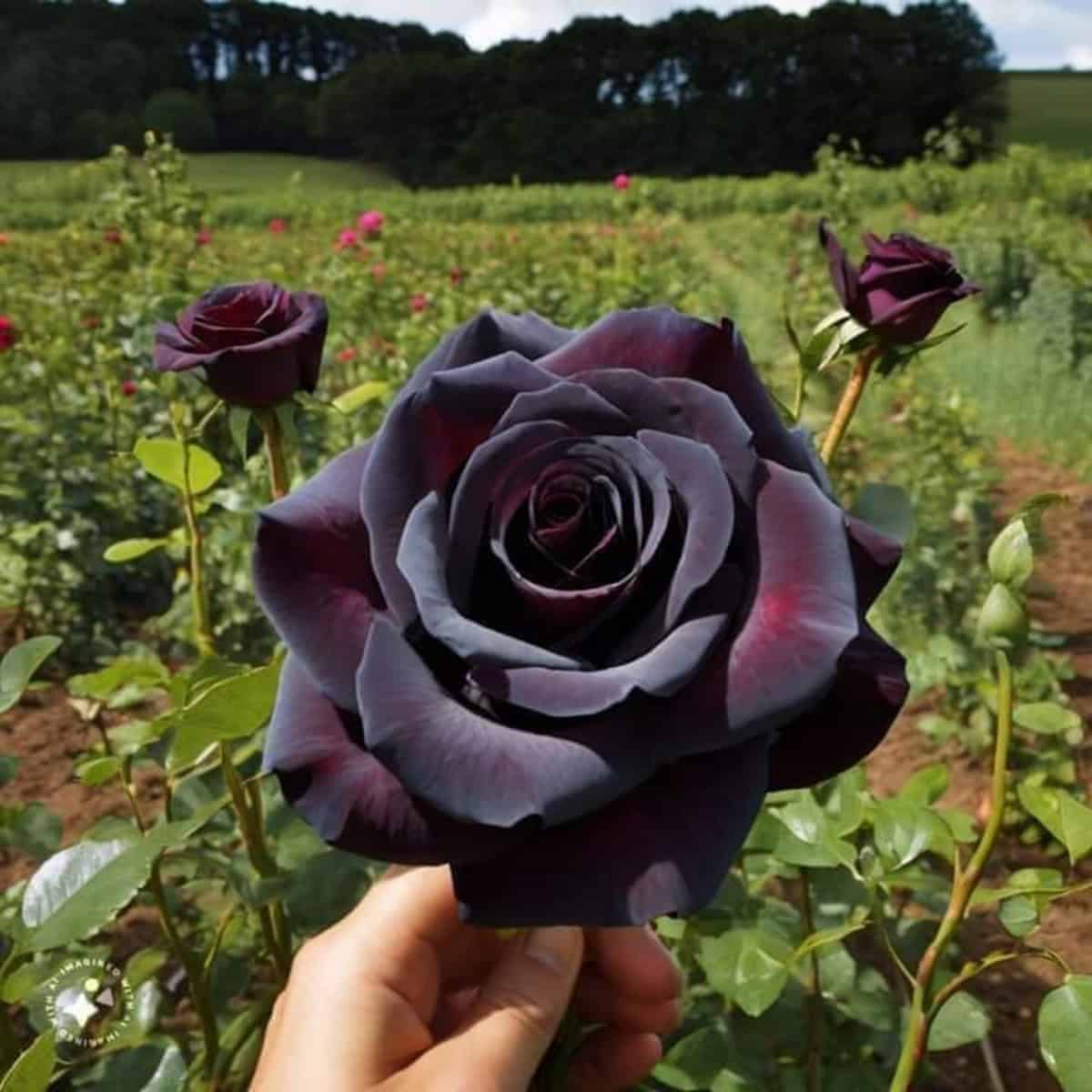
- USDA Hardiness Zones: 6 to 9
- Mature Size: Up to 3 feet tall and 2 feet wide
The Black Baccara Rose stands out in the gardens. It boasts near-black petals, a unique tint for your landscape. This rose variant developed from meticulous breeding presents deep red petals that appear black.
Your Black Baccara Rose requires care similar to other roses. It needs full sunlight and well-draining soil. Proper upkeep results in healthier blooms. This variety is noted for its velvety texture, a highlight for any rose enthusiast.
Black Calla Lily
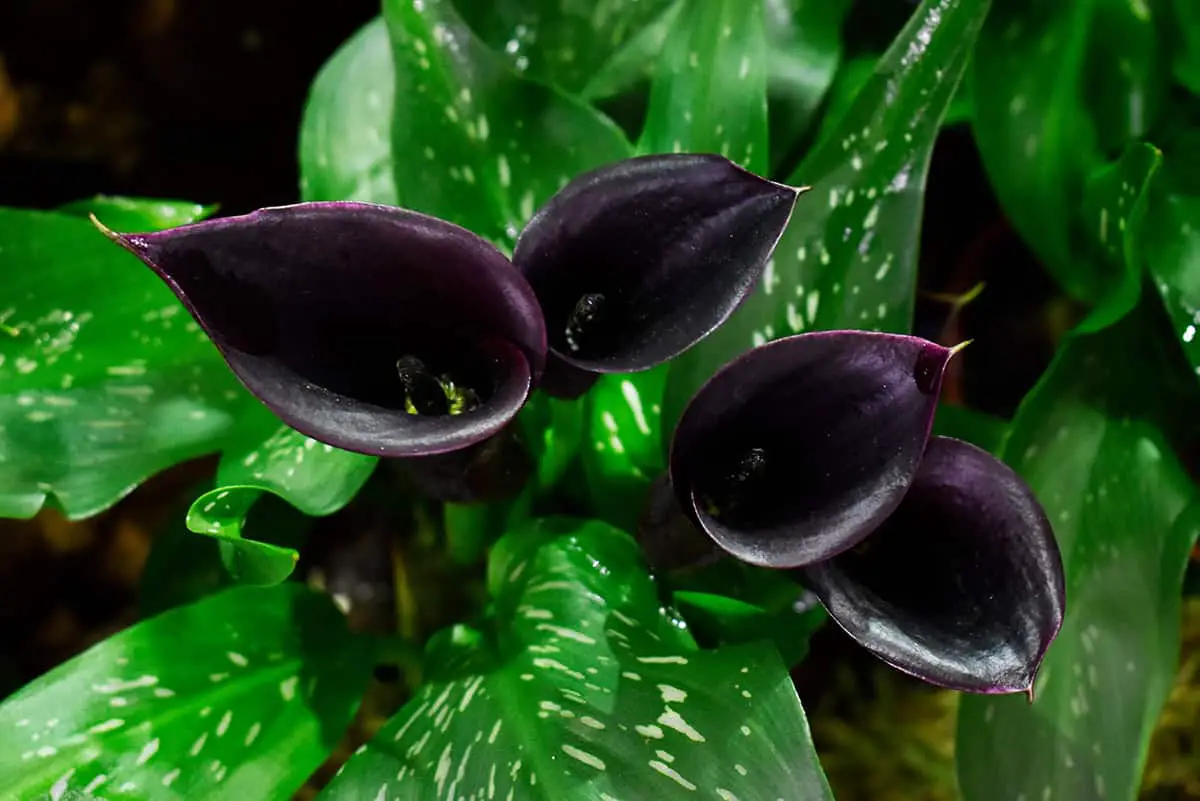
- USDA Hardiness Zones: 8-11
- Mature Size: Up to 36 inches tall and 24 inches wide
The Black Calla Lily is a unique perennial. It stands out with its deep purplish-black hue. This flower is native to the eastern Mediterranean region. For your garden, its striking appearance is a bold choice.
Grow Black Calla Lilies in well-draining soil. They thrive in partial to full sunlight. Ensure you water them regularly. This care keeps them healthy and vibrant.
Remarkable for its trowel-shaped foliage, the plant emerges from a tuber. Each spring, you’ll witness its elegant flowers. It can reach up to 3 feet tall and 2 feet wide.
The Black Calla Lily is not a true lily. However, it’s related to the arum family. Its dramatic color makes it a popular choice among gardeners.
Black Velvet Petunia
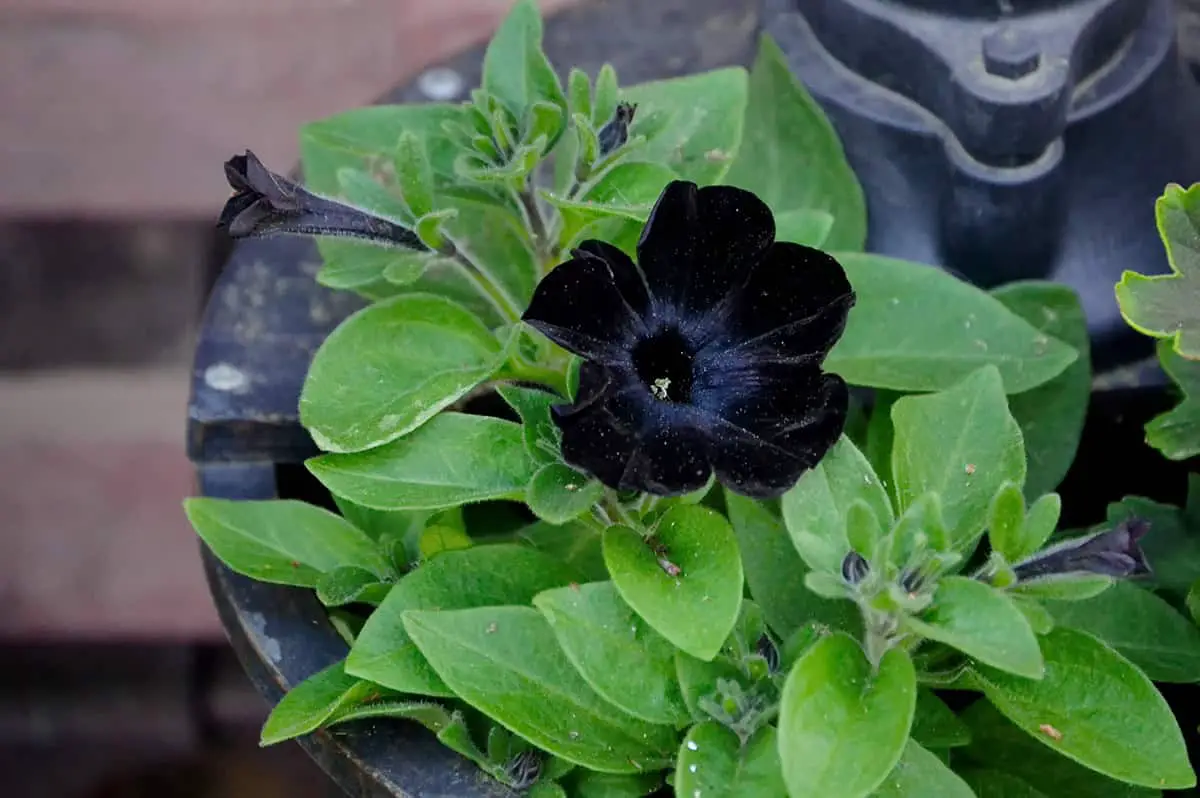
The Black Velvet Petunia stands out in the gardens. You’ll recognize its nearly true black color. Petunia breeders achieved this deep hue after extensive hybridization. Your garden space can be truly unique with these flowers.
Ideal conditions allow the Black Velvet Petunia to thrive. You should provide full sunlight and well-draining soil. Consistent watering maintains its lush blooms. It’s essential not to overwater to prevent root rot.
- USDA Hardiness Zones: 9-11
- Mature size: Grows to a height of 8-12 inches. Spreads up to 10-12 inches wide
Chocolate Cosmos
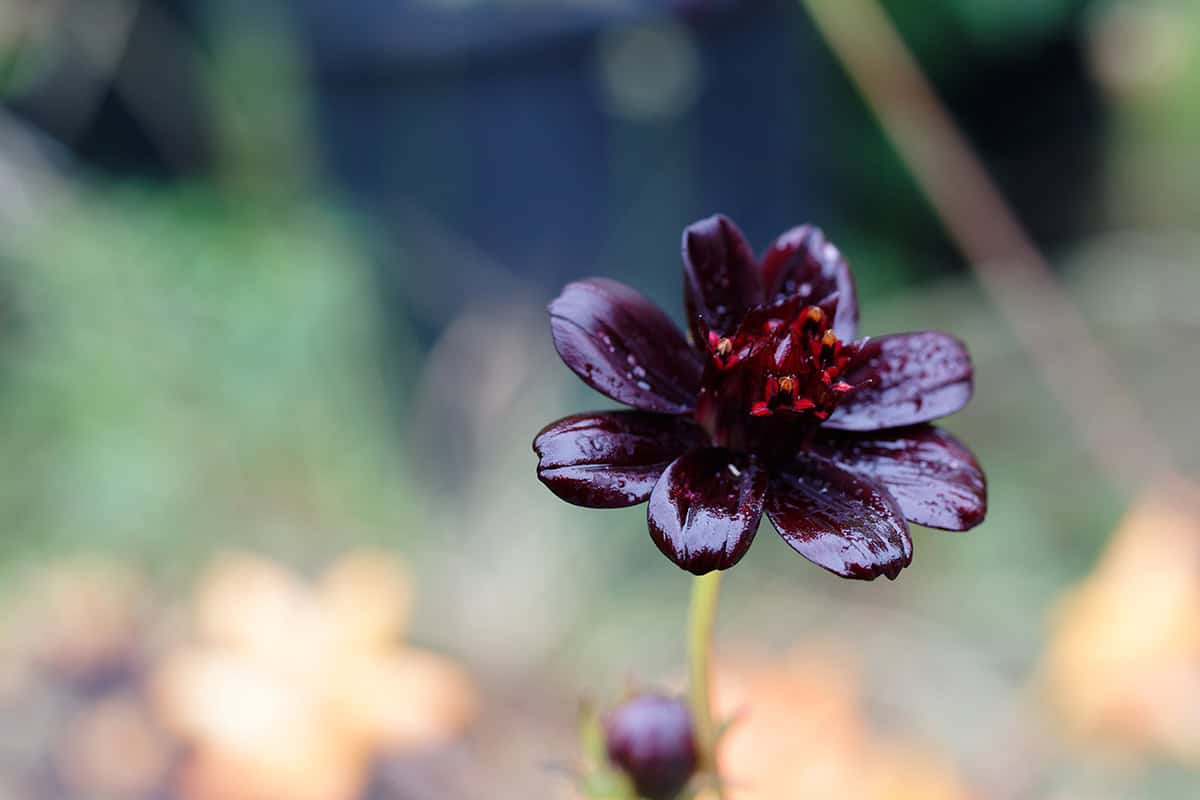
- USDA Hardiness Zones: zones 8A to 10B.
- Mature size: Grows to about 15-30 inches tall. Spreads roughly 12-18 inches wide
Chocolate Cosmos are a unique addition to your garden. These plants offer deep, near-black flowers. They emit a dark chocolate fragrance, enhancing their appeal. Blooming in the summer, they provide a rare color in floral arrangements.
The velvety blossoms of the Chocolate Cosmos are distinctive. Their dark red to brown color is striking. Many plants rarely flower like these, which makes them stand out. These blossoms come alive from late spring to early summer.
Proper care ensures healthy growth. The Chocolate Cosmos loves summer heat but is slow to grow in spring. Make sure they get full sun to partial shade. Well-drained soil is essential for their development.
Black Hollyhock
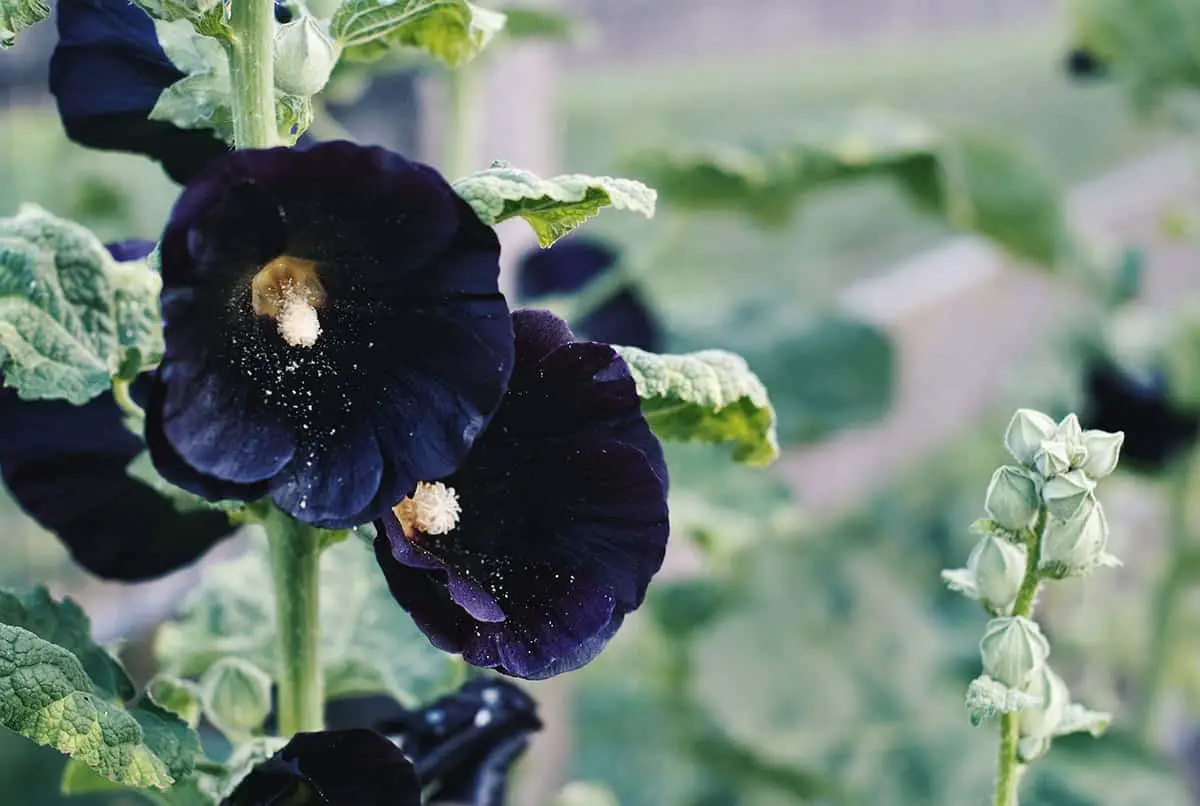
- USDA Hardiness Zones: Allowable growth regions
- Mature Size: Maximum height and spread
The Black Hollyhock, known scientifically as Alcea rosea, is a unique plant. This flower can appear almost black, offering a rich, deep maroon color. It stands tall in the garden, commanding attention with its stately blooms.
Your Black Hollyhock has specific needs to thrive. It flourishes in full sun and requires well-drained soil. During hot, dry weather, you might notice the lower leaves wilting. This is a natural response to the conditions.
This flower’s dramatic appearance adds contrast to any garden setting. The variety of colors available can range from reds and pinks to yellows and whites, with the near-black burgundy being particularly striking.
In caring for your Black Hollyhocks, you’ll witness the full lifecycle. These plants can be annual or short-lived perennials, contributing to the circle of life in your garden. The blooms, while often dark purple, are sometimes referred to as ‘black’ due to their intensity.
Bat Orchid
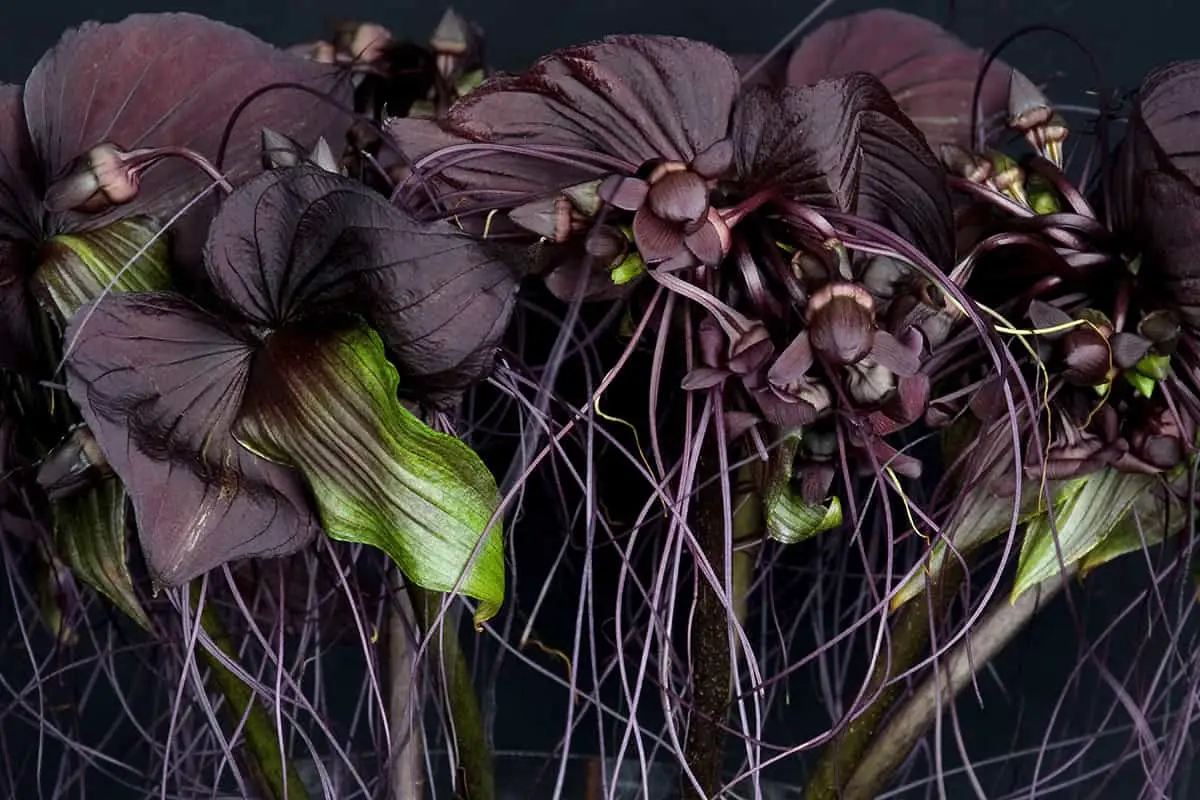
- USDA Hardiness Zones: 10 – 12
- Mature Size: Up to 36 inches tall and wide
The Bat Orchid, or Tacca chantrieri, is a captivating plant. Your garden could become an intriguing space with its deep purple bracts resembling wings. Native to Southeast Asia, it thrives in tropical environments. It’s also known as the black bat flower, an appropriate name given its unique appearance.
Cultivating this plant demands specific conditions. You need to provide high humidity and shade, mimicking its natural habitat. Over time, the plant reaches a considerable size, perfect for a statement piece in your garden. People often notice its whisker-like filaments, adding to its striking look.
Black Hellebore
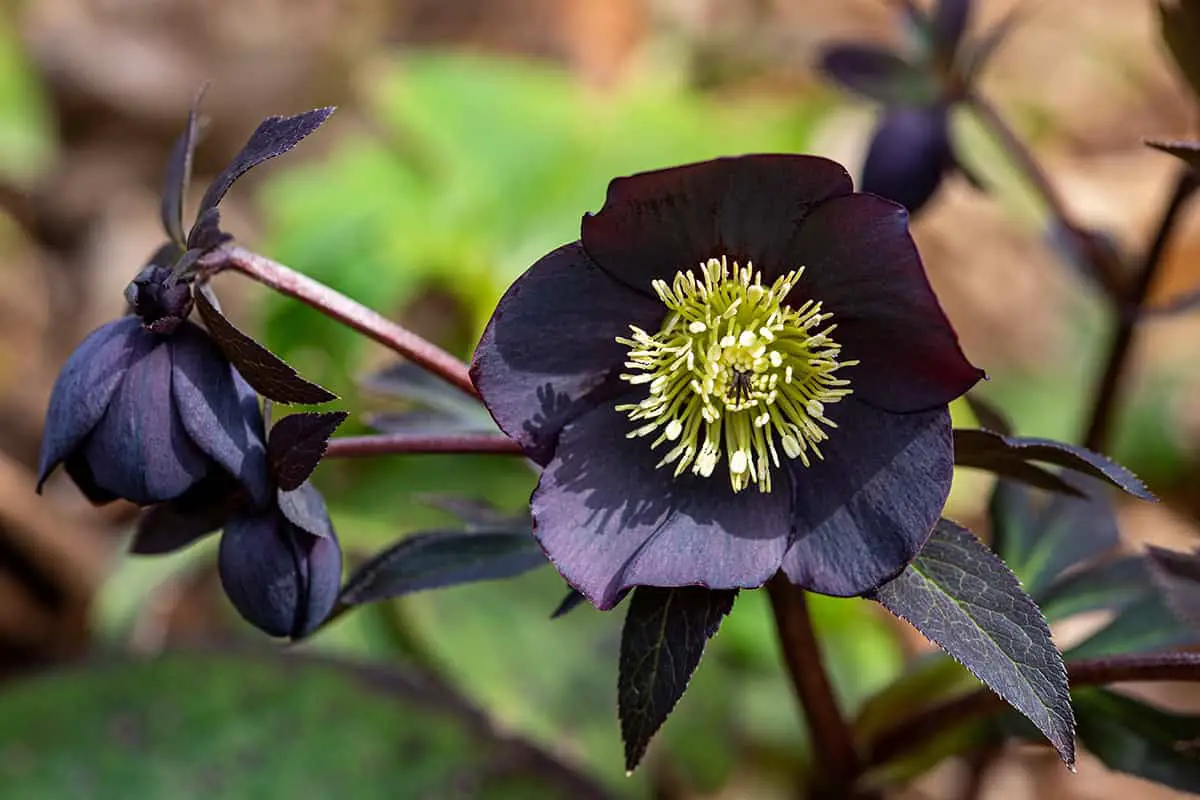
- USDA Hardiness Zones: zones 3 through 9
- Mature Size: Reaches mature size of 1 to 1.5 feet tall and wide
Black Hellebore offers striking blooms even in winter. You’ll find it blossoming in the coldest months. Its botanical name is Helleborus niger, and it’s known for robust growth and hardiness.
You can recognize Black Hellebore by its large, cup-shaped flowers. They display deep hues, often mistaken as black. These flowers are a strong contrast to the snow, making them stand out in your garden.
Your cultivation success with Black Hellebore begins with understanding its needs. This perennial thrives in partial shade and well-drained soil. It requires minimal maintenance once established.
Black Hellebore brings exceptional beauty to winter landscapes. You can add this perennial to woodland gardens, shaded borders, or as understory plants. Its evergreen leaves remain attractive year-round.
Black Pansy
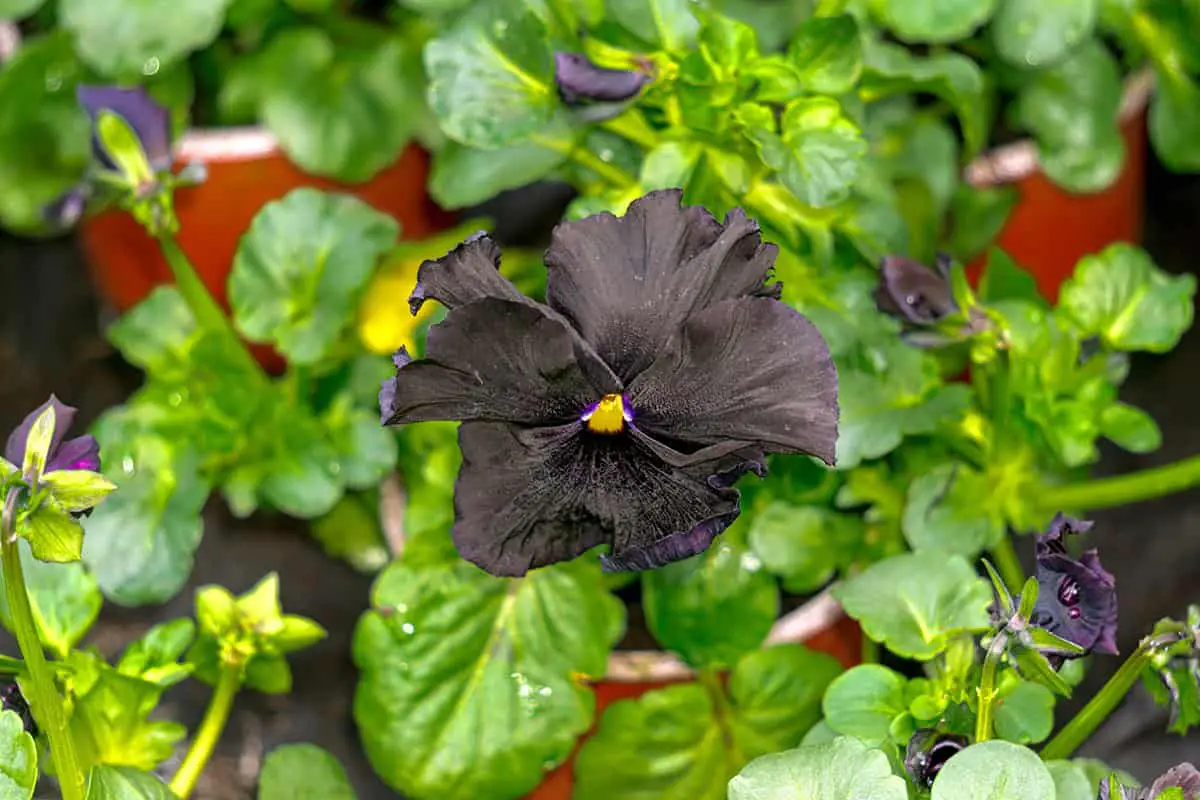
- USDA Hardiness Zones: 6 to 10
- Mature Size: Grows up to 9 inches in height
Black pansies stand out in any garden. Your encounter with black pansies introduces you to their unique charm. They possess deep, dark petals that may appear black. These flowers often feature contrasting colors, like slender lines. People call these markings whiskers.
You might consider planting black pansies. They tolerate low temperatures well and remain vibrant even during dreary weather.
Black Magic Petunia
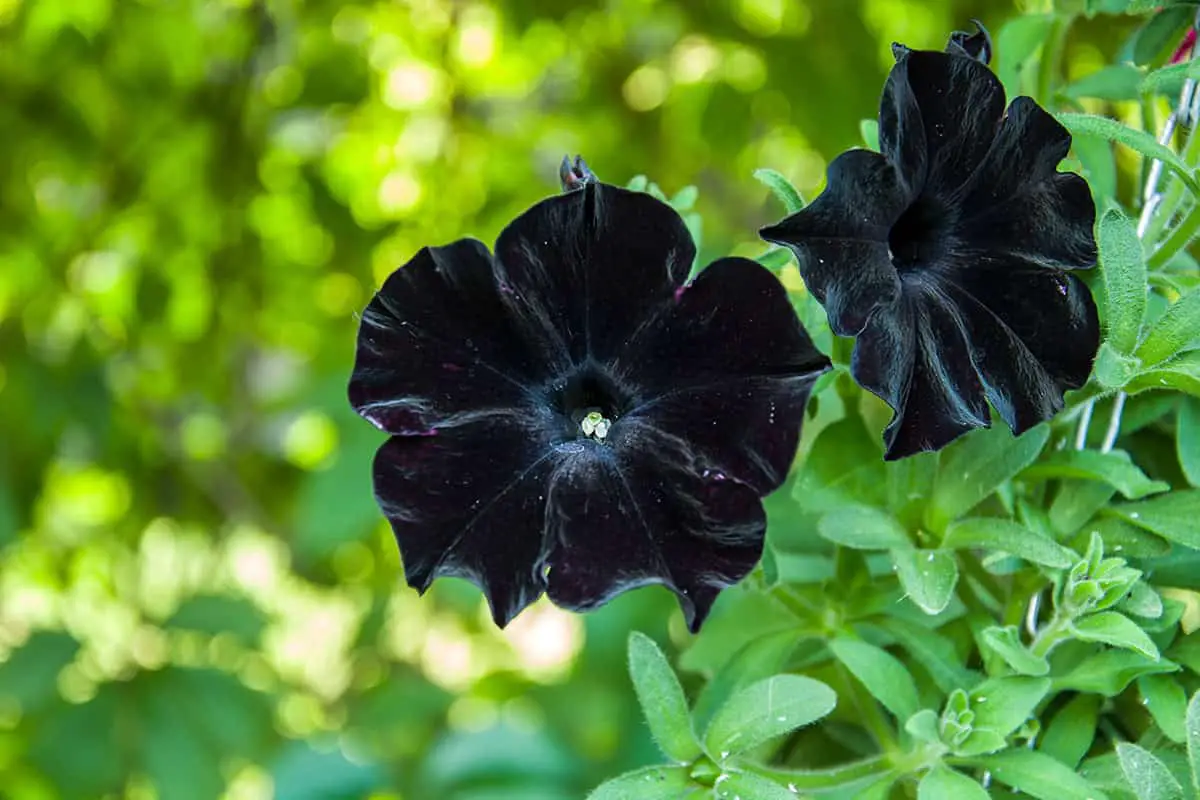
- USDA Hardiness Zones: 9-11
- Mature Size: Grows up to 12 inches tall and 24 inches wide
Black Magic Petunia stands out in gardens. Its deep, almost velvet-like flowers appear black, captivating onlookers. With its eye-catching blooms, you gain a gothic flair for your garden. Garden enthusiasts prize it for its unique color.
In full sun environments, your Black Magic Petunia thrives. You’ll need to ensure well-drained soil for optimal growth. Regular watering helps maintain its striking blooms through the summer. Unlike other petunias, this variety emits a subtle scent.
Begin your planting after the last frost date. Your Black Magic Petunia will bloom from spring to frost. Cut back spent flowers to encourage new growth. It performs well in containers and hanging baskets too.
Ebony Queen Iris
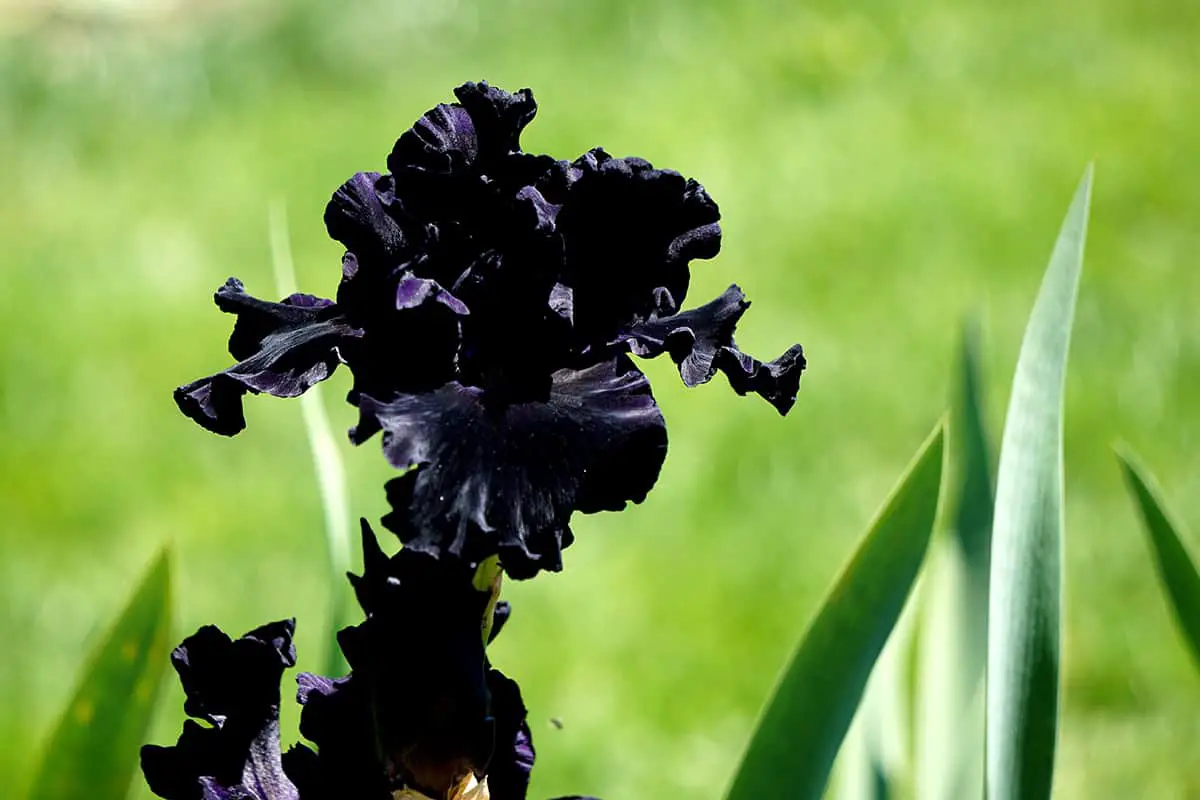
- USDA Hardiness Zones: 3 through 9
- Mature Size: Up to 4 feet tall and 2 feet wide
The Ebony Queen Iris stands out in the gardens. Its petals feature a deep purple, almost black hue. This rarity in the Iris family blooms in late spring to early summer.
Your garden’s appeal heightens with this plant. It’s known for its striking color and tall, elegant profile. The Ebony Queen Iris grows best in full sun to partial shade. Ensure it gets at least six hours of sunlight daily for optimal growth.
When you plant the Ebony Queen Iris, consider soil conditions. It prefers well-drained soil, and you should keep the soil consistently moist but not waterlogged. As a robust perennial, it returns each year with minimal care.
Black Beauty Elderberry
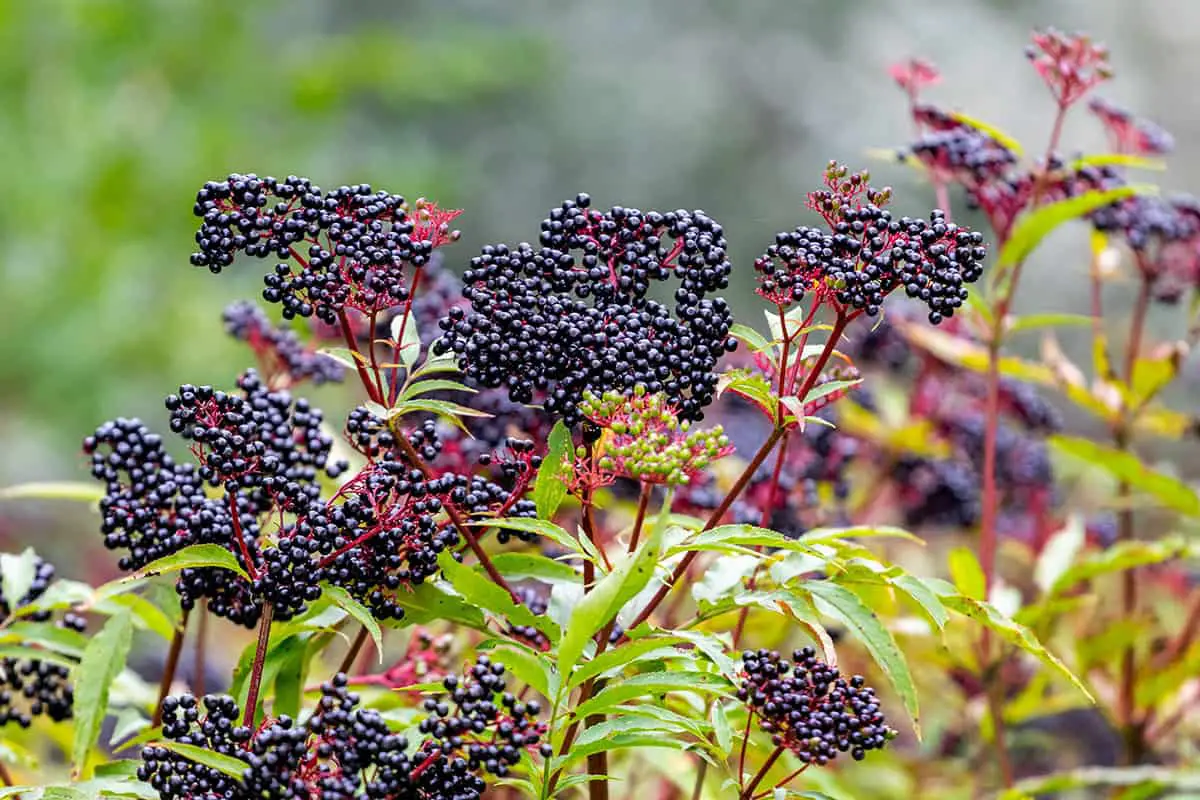
- Hardiness Zones: Hardy in USDA zones 4-7
- Mature Size: Reaches 8-15 feet high and 8 feet wide
The Black Beauty Elderberry is a unique plant. It features lemon-scented blooms and clusters of shiny black fruit. This plant enhances your garden’s aesthetics. It offers both visual appeal and wildlife benefits.
Your garden can become a haven for pollinators with this elderberry variety. Its dark purple leaves add a dramatic touch. You’ll appreciate its versatility, whether grown as a hedge or a standalone feature.
Black Dragon Rose
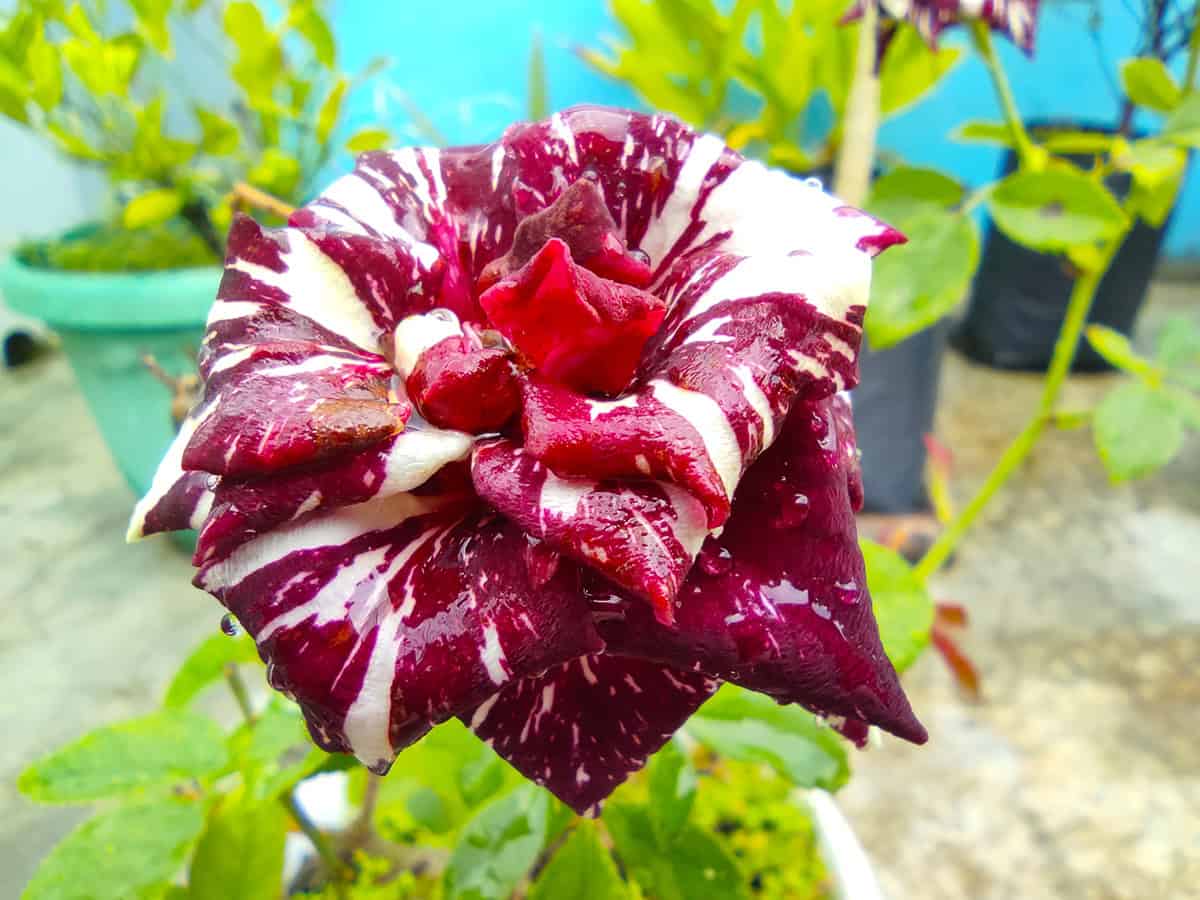
- USDA Hardiness Zones: 5 through 9
- Mature Size: Up to 3 feet tall and wide
The Black Dragon Rose stands out with its deep burgundy blooms. They resemble a dark, velvety wine color rather than true black. Your garden benefits from its dramatic flair.
This rose variety thrives when you provide full sun and well-drained soil. It demands regular watering to establish deep roots. Care includes pruning in late winter for optimal growth.
To maintain your Black Dragon Rose, remove any wilted flowers. This encourages the plant to produce new blooms. It’s resistant to diseases, making it easier for you to care for.
Plant your Black Dragon Rose where its unique color can shine. It pairs well with brighter flowers, creating a striking contrast.
Black Swan Poppy
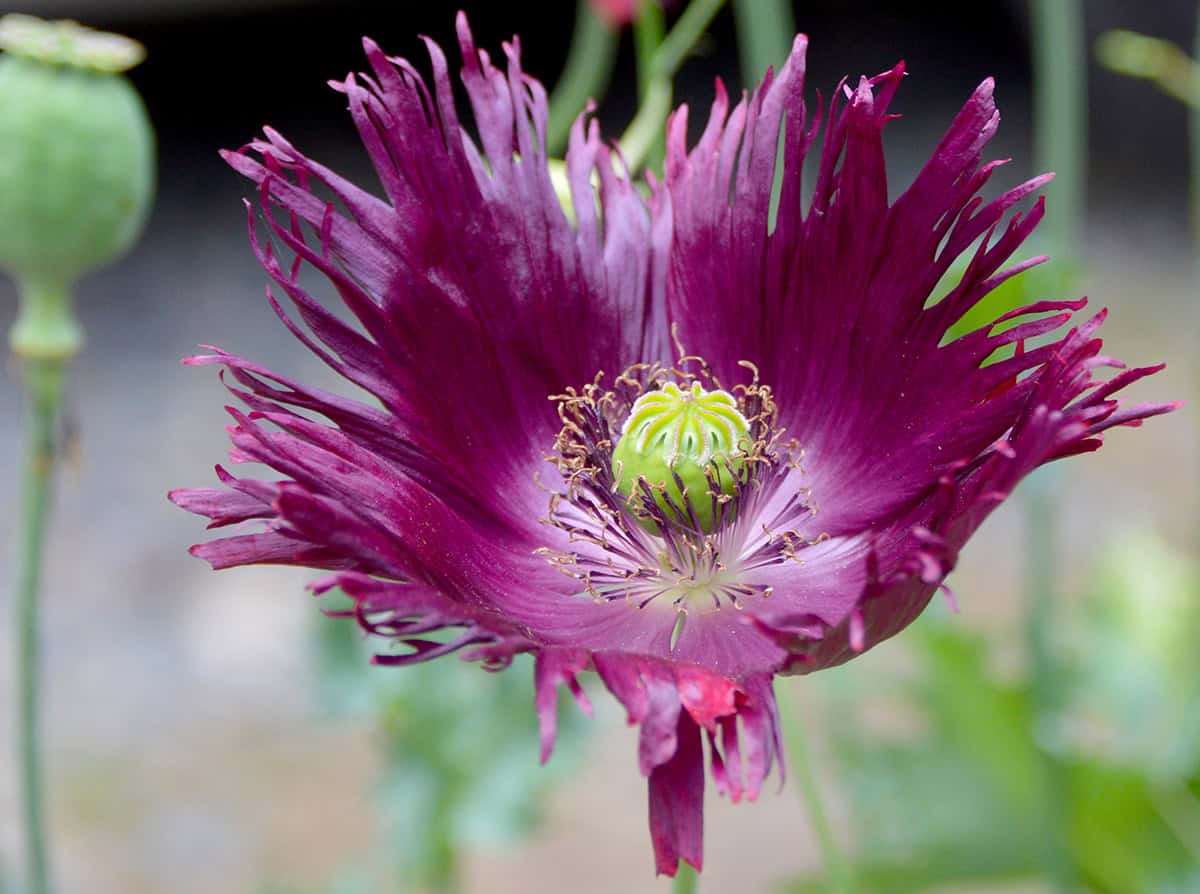
- USDA Hardiness Zones: Suitable for zones 3-9
- Mature Size: Typically reaches 2-3 feet in height
The Black Swan Poppy is a unique and striking flower. Its deep, almost-black blossoms make it a standout in any garden. As you explore the world of dark-hued blooms, the Black Swan Poppy is a cultivar that catches the eye and sparks fascination.
This poppy variety displays large, double flowers. Their color is a rich, velvety maroon that can appear black in certain lighting. The striking appearance is enhanced by a feathery texture, giving each bloom a delicate, ruffled look.
Caring for your Black Swan Poppy is straightforward. Full sun is ideal to maintain vibrant hues. Well-drained soil supports healthy growth. Regular watering is key, especially during dry spells.
Black Star Calla Lily

The Black Star Calla Lily is a striking plant. Its blooms are nearly black and elegant. You’ll find them adding a dramatic touch to gardens. The dark hue contrasts sharply with lighter flowers.
Your Black Star Calla Lily does best in well-drained soil. Ensure it receives partial to full sunlight. Proper care ensures lush flowers.
These flowers have a defined trumpet shape. They are known for their long-lasting blooms. Typically, this lily reaches maturity in the summer.
- USDA Hardiness Zones: 8-10
- Mature Size: Grows to a height of 18-24 inches. Spreads approximately 12 inches
Black Pearl Asiatic Lily
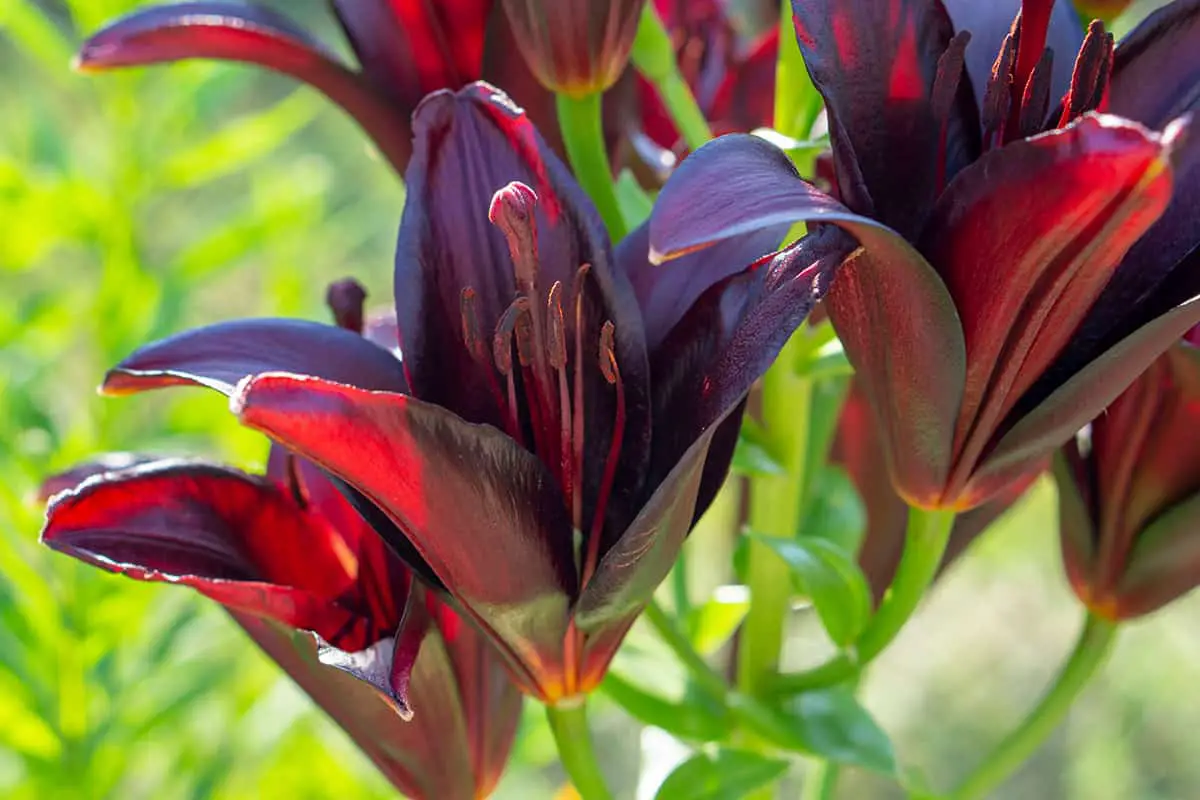
- USDA hardiness zones: 4 through 8
- Mature size: Can reach up to 3 feet in height
The Black Pearl Asiatic Lily stands out in gardens. You spot the dark, almost black flowers first. They are a hybrid variety, known for their unique color. Their deep burgundy petals have a lustrous sheen. It appears black in certain lights.
Your garden gains a striking element with this lily. The flowers emit a moderate fragrance. They don’t require much care. Plant them in well-drained soil. Ensure they get full sun to partial shade.
This lily blooms in early to mid-summer. You’ll see it add dramatic flair at this time. The star-shaped flowers create a visible contrast against lighter plants.
Black Prince Snapdragon
- USDA Hardiness Zones: 7-11
- Mature Size: 18 inches tall
The Black Prince Snapdragon is a striking plant. Its deep crimson blooms create a moody aesthetic in your garden. You’ll recognize the unique color that nearly appears black.
The flowers of the Black Prince Snapdragon are deep crimson, almost black, and bloom heaviest in cool weather.
The plant prefers full sun to partial shade and thrives in well-draining, fertile soil.
Night Rider Lily
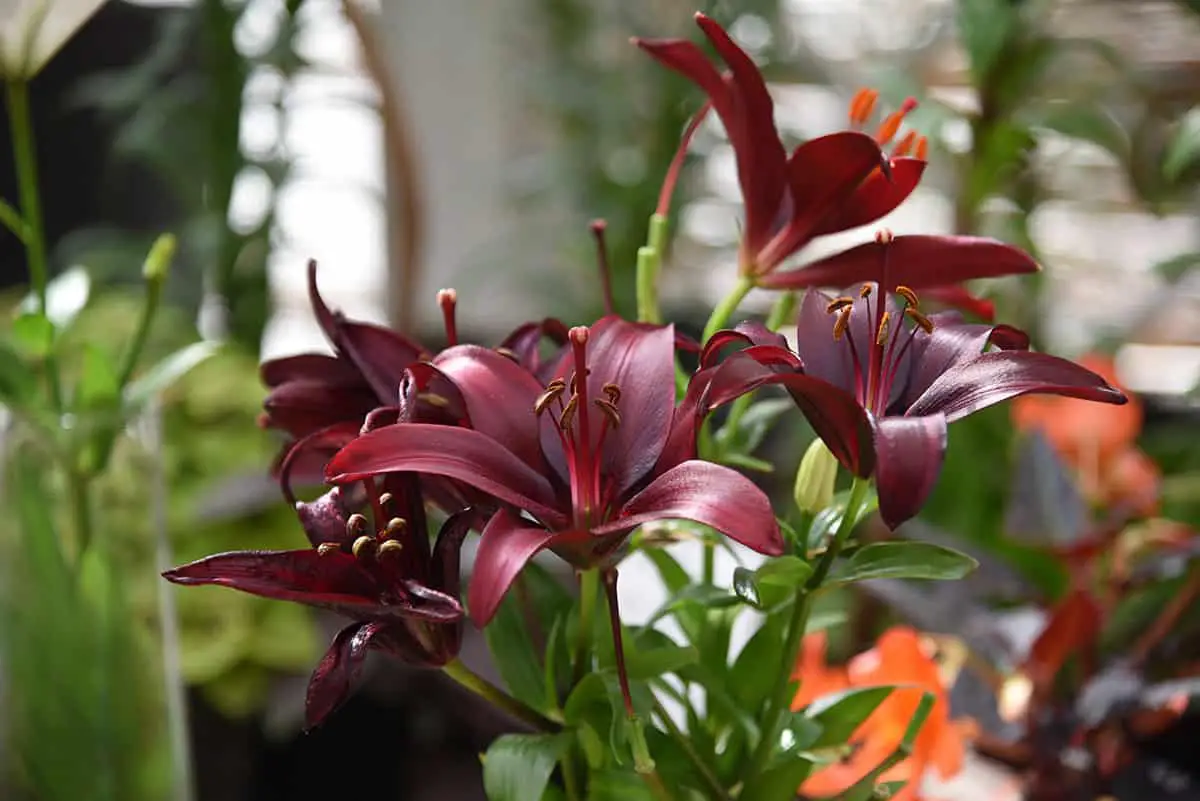
- USDA hardiness zones: 3-4
- Mature size: 3-4 feet in height
The Night Rider Lily stands out with its almost black flowers. You’ll recognize these lilies by their deep plum-red petals. They thrive in your garden, catching eyes with their unique hue.
When you plant Night Rider Lilies, you ensure a striking display. Full sun to part shade suits them best. They enrich gardens with their up-facing, dramatic flowers.
Black Eyed Susan
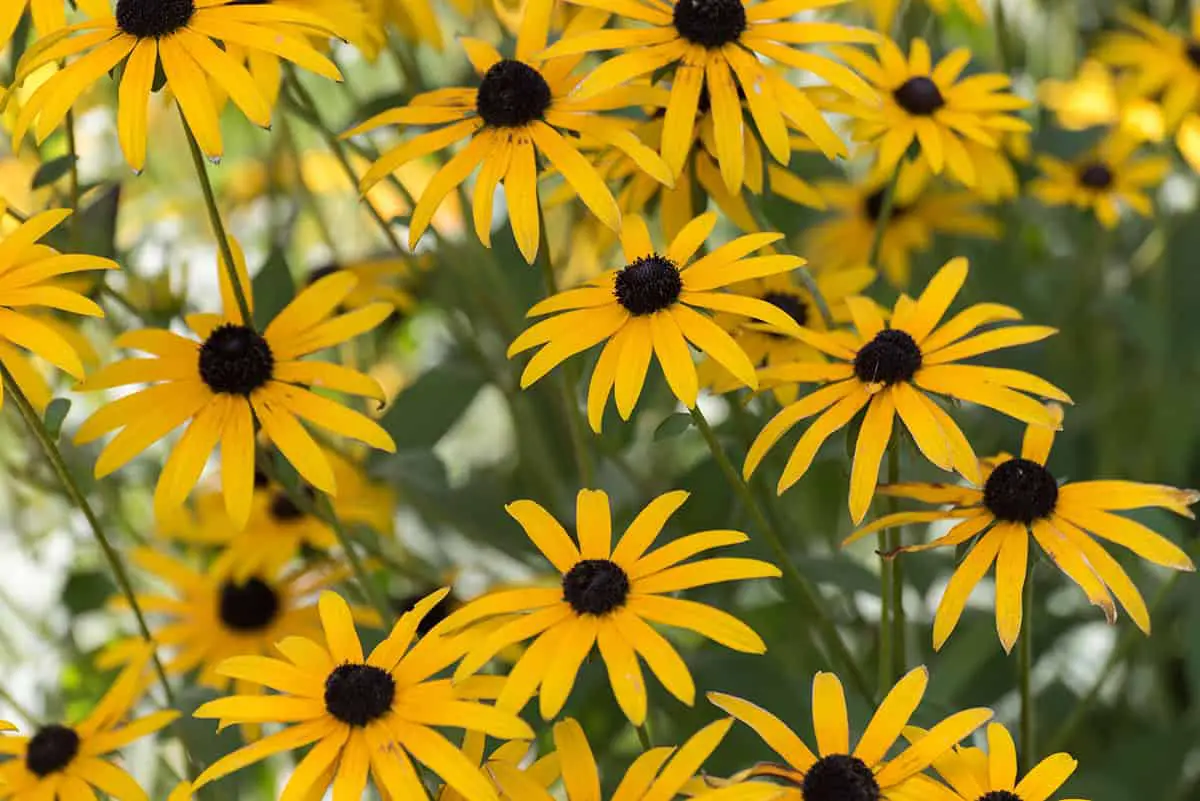
- USDA Hardiness Zones: 3 through 7
- Mature Size: Up to 3 feet tall and 1 to 2 feet wide
Black-eyed Susan, a vibrant, daisy-like flower, quickly catches your eye. Your garden radiates with its golden-yellow petals and signature dark brown centers. These blooms are not only visually striking but also attract pollinators, such as bees and butterflies.
Optimal growth occurs in full sunlight, but these flowers can tolerate partial shade. When planting, choose well-draining soil to encourage healthy growth. Remember, Black-eyed Susans are biennials or short-lived perennials, meaning they may return for several seasons.
Black Scabiosa
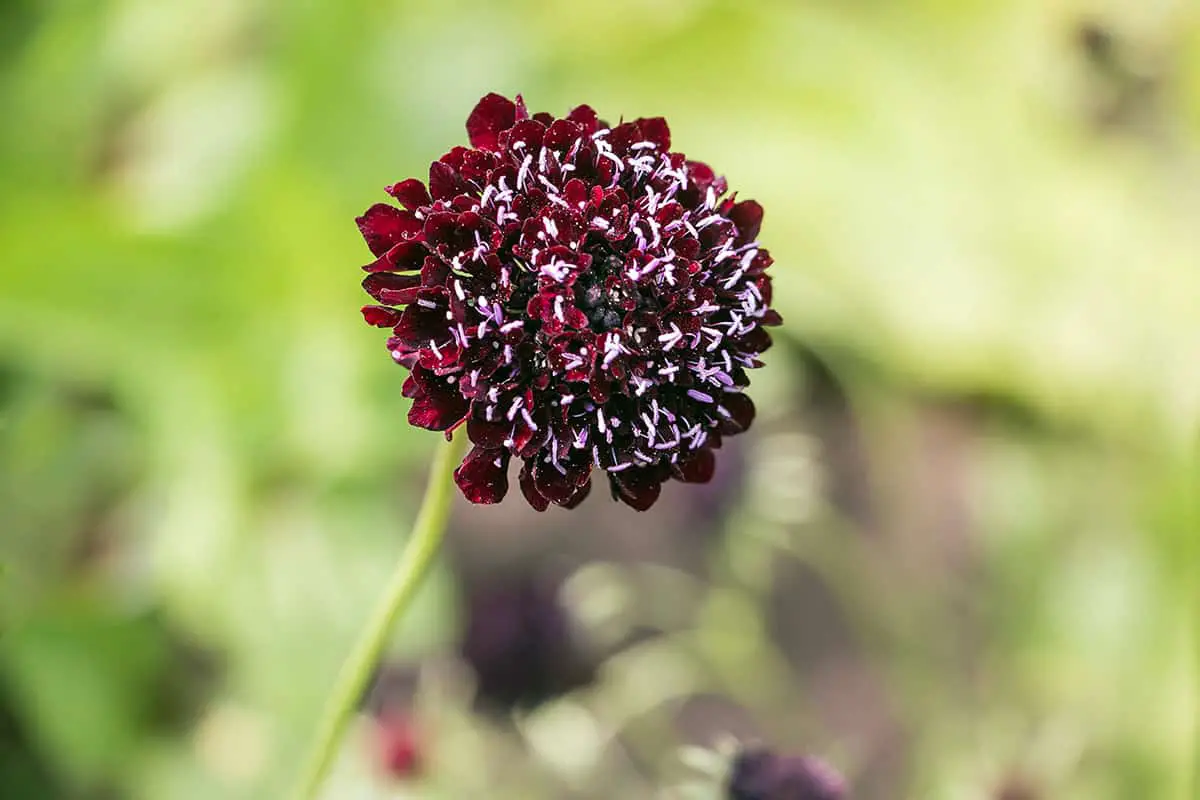
- USDA hardiness zones: Consult a local extension for specifics
- Mature size: Up to 3 feet in height
Black Scabiosa stands out with its deep hues. It’s known for the ‘Ace of Spades’ variety. These flowers are nearly black. They offer a unique addition to your garden.
Black Scabiosa grows up to 3 feet tall. It presents fragrant, double flowers. The blooms appear dark brown and almost black in certain lights. They bring a dramatic flair to any space.
Your bouquets will gain an edge with Black Scabiosa. Its flowers are perfect for cutting.
Care for Black Scabiosa involves full sun exposure. Adequate drainage is also vital. These plants thrive in well-drained soil.
Remember, Black Scabiosa blooms in the warmer months. You’ll enjoy its dramatic coloring all season long. To include Black Scabiosa in your garden, start with soil that is fertile and well-aerated.
Black Zinnia
- USDA hardiness zones: 3-10
- Mature size: up to 3 feet in height
Black zinnia flowers captivate with their stunning hue. You’ll recognize black zinnias by their deep, dark petals. These flowers, often a very dark purple or red, appear black to your eyes. They add dramatic flair and contrast to your garden.
Your black zinnia can be the Queen Red Lime variety with its unique coloring. You’ll watch as flowers bloom with a dark red center, fading to dark purple that looks nearly black. Enjoy these blooms from mid-summer to early fall.
You must provide them with ample sunlight. Black zinnias thrive in well-drained soil. Regular watering, especially in dry spells, is essential. Proper care will help your flowers flourish, and they can even attract butterflies and hummingbirds to your garden.
